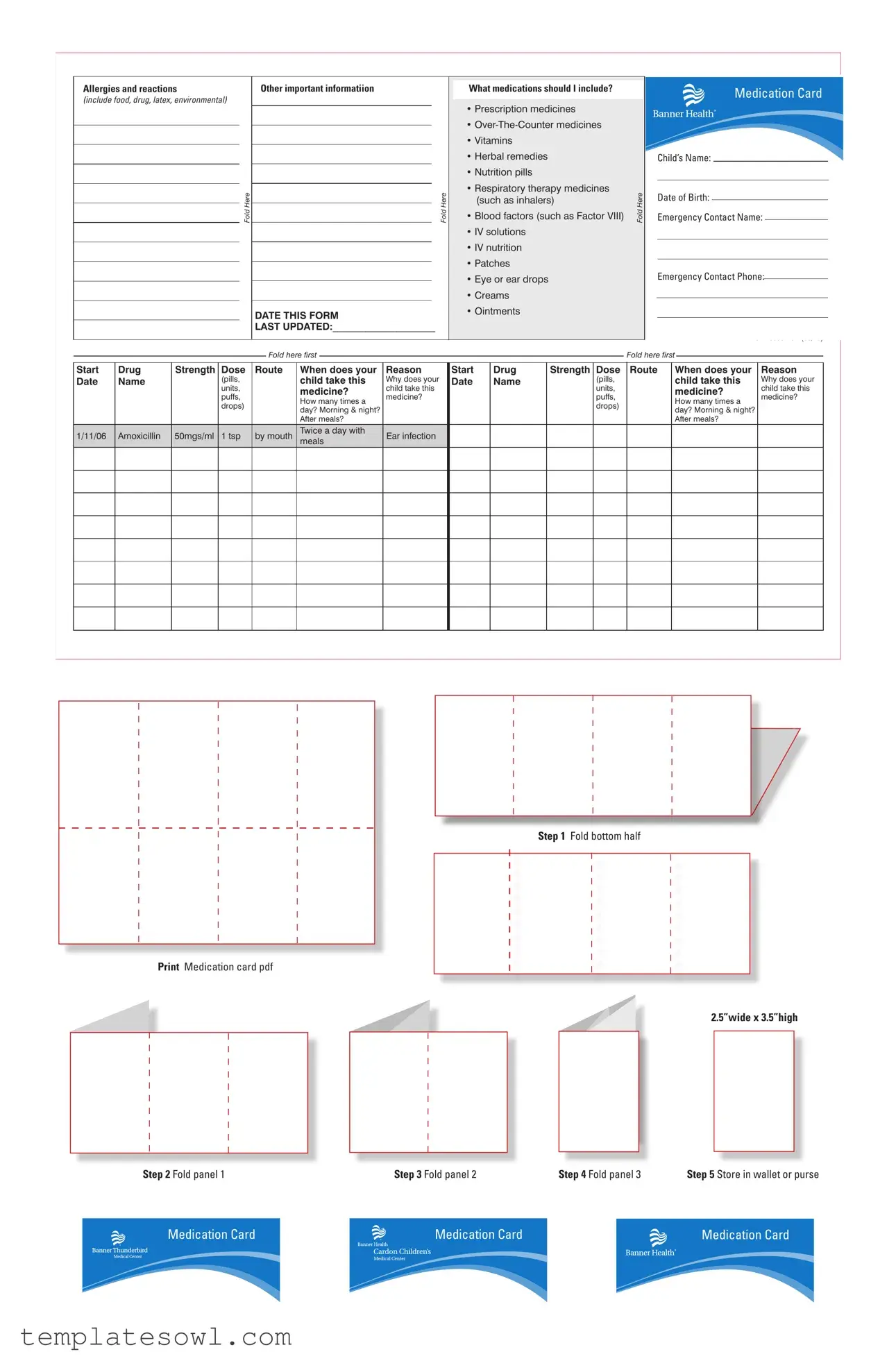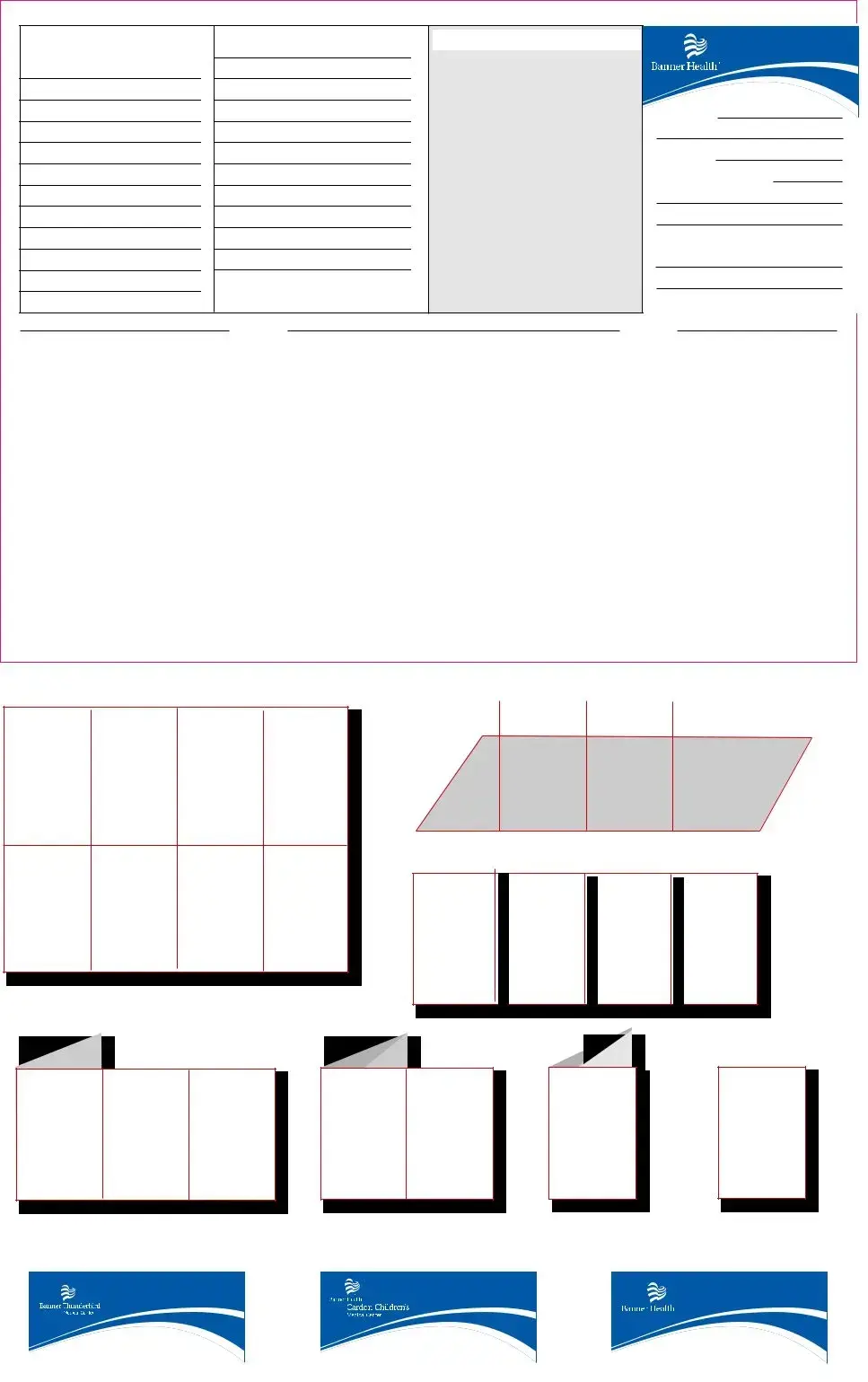What is the purpose of the Medication List For Wallet form?
This form serves as a compact and organized way to track essential medication information. By having a readily accessible list of medications, individuals can ensure they are prepared in case of emergencies. It provides vital details to healthcare professionals, caregivers, and family members about one's health needs.
What kinds of medications should I include?
It is important to include a comprehensive list of all medications that you or a loved one may be taking. This includes prescription medicines, over-the-counter options, vitamins, herbal remedies, and specific therapies such as respiratory inhalers. Even less common items like nutrition pills, IV solutions, patches, and topical applications like creams or ointments should be listed for a complete picture of one’s medication regimen.
How do I fill out the form for each medication?
When filling out the medication form, start by entering the name of the medication in the designated space. Next, provide the strength and dosage, and specify the route of administration—this indicates how the medication is taken, whether by mouth, injection, or otherwise. It is also essential to note when the medication should be taken and the reason for its use.
What if my child has allergies?
Allergies can have serious implications for treatment and care. Therefore, it’s crucial to include any known allergies and adverse reactions on the form. This could encompass food allergies, drug allergies, latex, and other environmental factors. By noting these clearly, caregivers can help avoid potentially harmful situations in emergencies.
How often should I update the Medication List For Wallet form?
It is advisable to review and update the form regularly, especially after any changes in medication, dosage, or health status. It is also wise to revisit the form every few months to ensure all information remains accurate and pertinent. Keeping this up to date can safeguard against potential medication errors or complications.
Who should have access to this medication list?
The Medication List For Wallet form should be accessible to anyone responsible for your care. This could include family members, caregivers, and relevant healthcare providers. Providing this information ensures that everyone involved is informed and can act swiftly and appropriately in case of an emergency.
How can I ensure that the form is kept safe and accessible?
For optimal safety and accessibility, the completed Medication List For Wallet should be stored in a location that is both secure and visible. Folding it to fit easily in a wallet or purse is an excellent way to keep it handy. Additionally, consider keeping a digital copy and sharing it with trusted individuals who may need it in case of an emergency.
What should I do if my medication changes?
If there are any changes to your medications, such as new prescriptions, discontinuation of current ones, or dosage adjustments, promptly update the form. Reflecting these changes ensures that anyone who reads the form understands your current medication needs, which is critical for your ongoing care.
Is there a specific format for the Emergency Contact information?
Providing clear and complete Emergency Contact information is essential. Include the name of the emergency contact, their relationship to the individual, and a reliable phone number. This information helps medical personnel or caregivers reach the appropriate person quickly in urgent situations.


